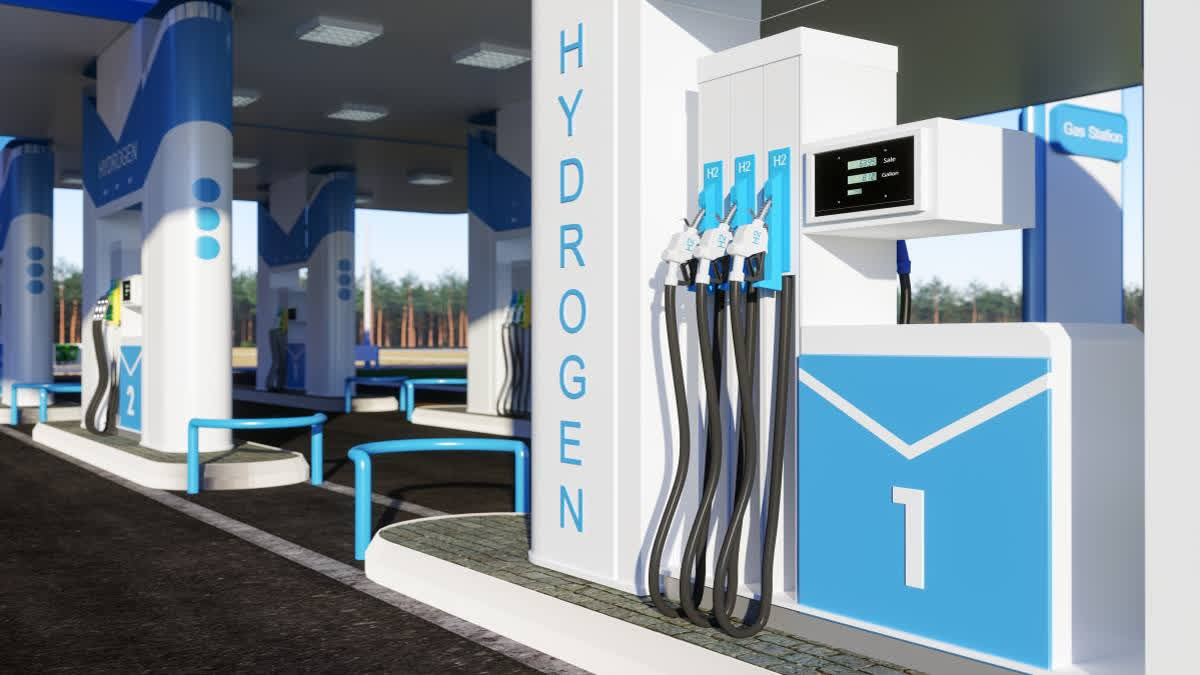Climate change and energy are the two interrelated key issues that modern society grapples with. Combustion of fossil fuels - the conventional energy sources - releases carbon dioxide – a dominant greenhouse gas that traps the heat, thus causing the earth's temperature to rise. The concentration of greenhouse gases in the Earth's atmosphere is at the highest level in the last 2 million years.
The 2022 Climate Report issued by the Intergovernmental Panel on Climate Change says, "Halting global warming in the long term requires, at a minimum, that no additional CO2 emissions from human activities are added to the atmosphere (i.e., CO2 emissions must reach 'net zero'). Given that CO2 emissions constitute the dominant human influence on global climate, global net zero CO2 are a prerequisite for stabilising warming at any level."
The emerging climatic threats compel the world to develop green energy substitutes. Among the alternatives, hydrogen is emerging as a source of green energy. However, the challenge is to enlist an efficient method of hydrogen production to meet the commercial-scale demand.
Hydrogen has traditionally been used in petroleum refining operations and as a component of fertilizer products. Referred to as “gray hydrogen”, this type of hydrogen is not climate-friendly, because it is retrieved from fossil fuels by refining natural gas. Most of the 70 million tons of hydrogen currently used globally annually by industry is derived from fossil fuels, giving it a large carbon footprint.
Of late, there has been increased attention on "green hydrogen", produced from renewable sources. The research shows that water-splitting electrolysis is an efficient method to produce green hydrogen. Countries like the United States, Germany, South Korea, China, Japan, and India are now gearing up to set up start-ups generating green hydrogen, produced from low-carbon energy sources like solar power and wind.
The Indian Government approved the National Green Hydrogen Mission in January 2023 with a budget allocation of Rs. 19,744 crores. The Mission aims to make India a major producer and supplier of Green Hydrogen globally. The Mission envisions setting up at least 5 MMT (Million Metric Tonnes) per annum of green hydrogen capacity with an associated renewable energy capacity of about 125 GW by 2030.
The hydrogen production process by itself is simple. By splitting the water (H2O) molecules into gaseous H2 (hydrogen) and O2 (oxygen). The hydrogen can then be piped to appropriately made storage areas. While upping the role of hydrogen as an energy carrier in a decarbonising economy, Peter Fairley in an outlook article published in the journal Nature on 14 December 2023 raises the question of a large hydrological footprint of hydrogen-burning plants.
The same article presents a back-of-the-envelope calculation that informs that every kilogram of hydrogen (H2) molecules requires 9 litres of water for the electrolysis of H2O and an additional 15 litres of water will be consumed for the purification purpose per kilogram of H2. But the hydrological footprint doesn't end there. The article points to the fact that the green hydrogen’s water footprint adds up if one accounts for the water used in the manufacturing stages of solar panels including photo-voltaic cells and wind turbines.
Though seawater offers a limitless source of hydrogen, the production processes that require desalination plants raise the possibility of serious environmental impacts. The desalination plants extract fresh water from seawater and residual brines with treatment chemicals are dumped back into the ocean which changes the seawater chemistry destroying marine life including fish.
The super-salty brines dehydrate their cells and kill them. Currently, nearly 50 per cent of the desalination capacity is concentrated around the land-locked Persian Gulf. It is predicted that desalination in combination with climate change will elevate coastal water temperature across the Gulf by at least 3 degrees Celsius by 2050, as predicted in a paper published in the December 2021 issue of Marine Pollution Bulletin. The climate change signals are already visible in the form of untimely heavy downpours and flash floods in the region.
A blog published by CNN on their site on 21 April 2024 features the ambitious plans of a US-based startup to build a plant on the western coast of Singapore to turn carbon dioxide from air and seawater in a process that will produce green hydrogen. The plant builders hope to pump in seawater and run it through an electric field separating it simultaneously into acidic and alkaline liquids and two gases: hydrogen and oxygen.
The acidic water is mixed with crushed rocks to normalise the pH of seawater and pipe it back to the sea. Fans will pass air through the alkaline liquid which induces carbon dioxide to form solid calcium carbonate-like material from which seashells are formed. This helps lock up the excess carbon from the seawater for thousands of years. The project leaders view this as a promising way to produce not only green hydrogen but also to make the ocean less acidic. However, critics think that the process could disturb the delicate balance of ocean chemistry as it becomes more alkaline.
Some researchers foresee potential environmental dividends if enthusiasts tap wastewater for green hydrogen. Many of them think that putting more effort into recycled wastewater to split hydrogen and oxygen will go a long way in water conservation while producing green energy. They suggest that new electrolysis technology and engineering integrations should be able to trim the cost of non-conventional use of wastewater to produce green hydrogen and oxygen.
This has become an active area of research that not only monetises green hydrogen but also obtains oxygen as a byproduct that can be used to sustain waste-eating microbes. Currently, wastewater plants use pumped air and by using oxygen faster waste digestion would ensue. The researchers with the municipal water authority of Sydney and the University of Sydney are reported to have calculated that the city's 13.7 gigalitres per year of unused effluent could yield 0.88 megatons of green hydrogen per year. Indian cities like Bengaluru can set an example in the use of wastewater to generate green hydrogen.
It is believed that hydrogen, including natural hydrogen which may occur in the deeper parts of the Earth, as an energy carrier, may have a significant role in decarbonising the energy system, but the efficacy in production, storage and transmission of this fuel depends on the versatility of the technologies.



